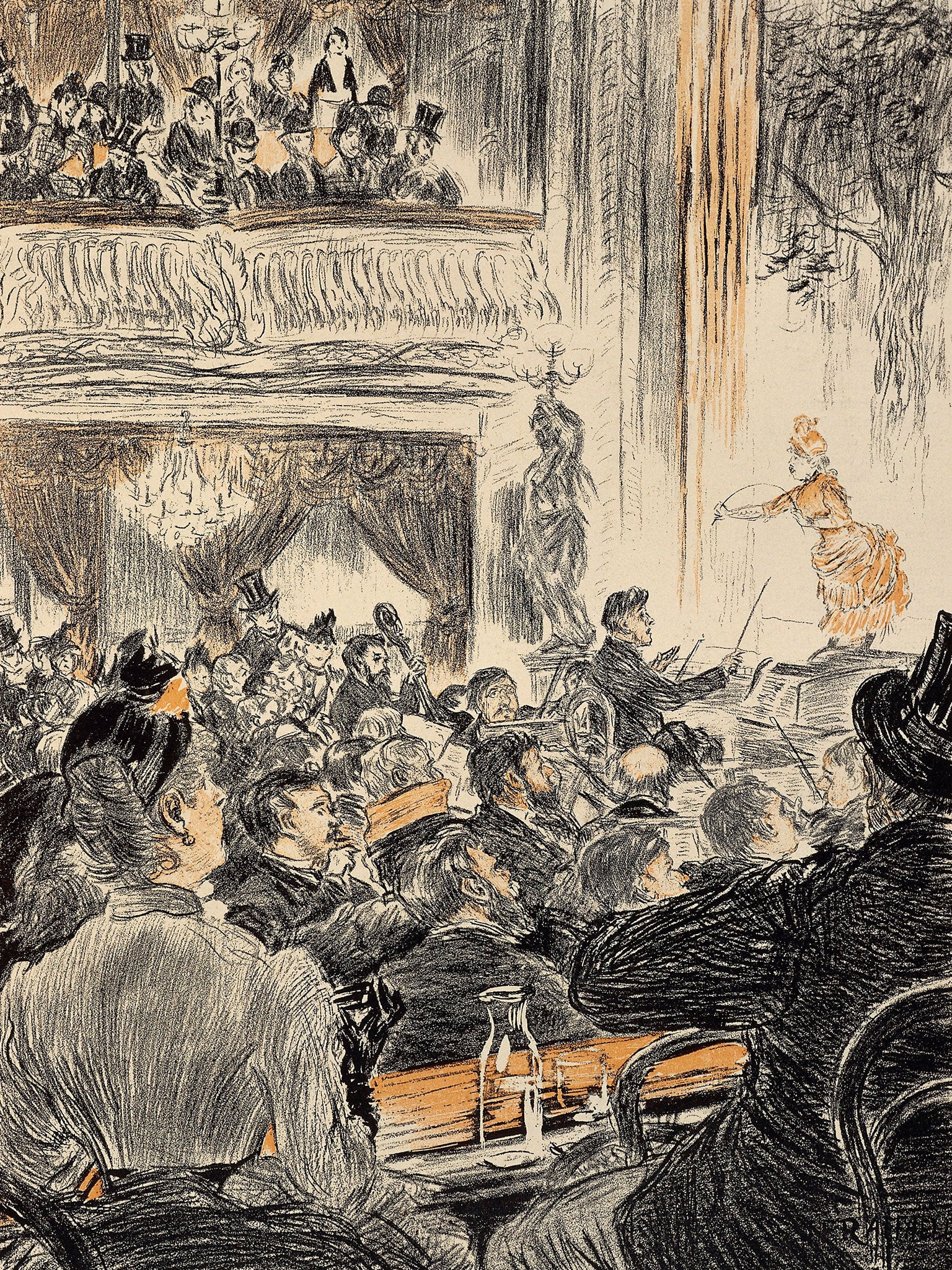The Other Paris: An Illustrated Journey Through a City's Poor and Bohemian Past by Luc Sante, book review
An elegant exploration of singers, and dancers, whores and pimps in the 19th-century capital

Your support helps us to tell the story
From reproductive rights to climate change to Big Tech, The Independent is on the ground when the story is developing. Whether it's investigating the financials of Elon Musk's pro-Trump PAC or producing our latest documentary, 'The A Word', which shines a light on the American women fighting for reproductive rights, we know how important it is to parse out the facts from the messaging.
At such a critical moment in US history, we need reporters on the ground. Your donation allows us to keep sending journalists to speak to both sides of the story.
The Independent is trusted by Americans across the entire political spectrum. And unlike many other quality news outlets, we choose not to lock Americans out of our reporting and analysis with paywalls. We believe quality journalism should be available to everyone, paid for by those who can afford it.
Your support makes all the difference.A single sentence in this beguiling history of the Parisian underworld brings you up with a sudden start. Writing about the buildings that were created in the mid-1850s to cater for a new and eager audience for cafes-concerts – variety shows that featured small orchestras, "light" chanteuses and a tenor clad in evening dress – Luc Sante mentions the Cigale, the Eden-Concert, the Scala… and one which enjoyed the exotic name of the Ba-ta-clan.
Obviously when he wrote it, Sante wouldn't have known the significance of that chance mention of a concert hall which is now synonymous with something other than comic vocalists and waiters serving the newly popular cherries in eau de vie.
But then, as this lavishly illustrated and beautifully constructed series of essays show, the French capital may have experienced bloodshed, revolution and invasion, but Paris endures. As Rick (Humphrey Bogart) tells Ilsa (Ingrid Bergman) in one of Casablanca's most memorable lines "We'll always have Paris."
The city that Sante introduces us to is the Paris of boulevardiers, whores, pimps, puppeteers, singers, gangsters, apaches, flâneurs, wrestlers, acrobats and magicians – the street people who inhabited the dusty squares and hidden by-ways before Baron Haussmann (called "Attila" by the mob) wiped away entire neighbourhoods in the name of progress in the mid 19th-century.
Sadly, as Sante points out, he wasn't the last to make his mark on the city. In the 1960s, the trio of Charles de Gaulle, Georges Pompidou and Andre Malraux ripped the heart out of Paris when they demolished the centuries-old market place Les Halles and replaced it with a "hellish subterranean shopping mall". "It wasn't just the stomach of Paris, but its soul," says Sante.
How much nicer it is, then, to slip back to the Paris of the early 19th century, the Paris of the onanistic Rue Tire-Boudin ("Pull-Sausage Street") when most things you were likely to need were available right on your street. "Not only were the butcher, the baker, the stationer, and the haberdasher likely to be close at hand, but the minor aristocrat lived on the second floor, the crank toiled in his mansarded aerie, the Italian poitical exile maintained a discreet presence on the fourth, the beggar sheltered in a hut attached to the courtyard and the artist was on call in the dive around the corner."
This was the Paris of Aristide Bruant "Le Chansonnier Populaire", who, with his wide-brimmed black hat and red scarf, was immortalised by Toulouse-Lautrec; of Madame Kelly, whose Le Chabanais brothel was patronised by the crowned heads of Europe, including the future Edward VII, who had a remarkable stirrup chair built to his own specifications for use in his amorous encounters; and of Mistinguett, the single greatest singing star of the inter-war period.
It was also a period when a Parisian fascination with Native Americans, spurred on by the popularity of Fenimore Cooper's novels led to the wholesale adoption of the word Apache by gangsters and small-time hoodlums and the appearance of the Apache dance ("a sort of tango with with the male, invariably wearing a striped jersey, a neckerchief, a flat cap and espadrilles… dragging the female, in low-cut black, around the floor") which I remember still being a part of variety shows in the 1960s.
But, as Sante points out, the Paris "game" may not be over "but its rules have irrevocably changed. The small has been consumed by the big, the poor have been evicted by the rich". He ends with the almost prescient words that "Any Paris of the future… will perforce involve fear, dirt, sloth, ruin and accident. It will entail the continual experience of uncertainty, because the only certainty is death."
Faber, £25. Order at £21 inc. p&p from the Independent Bookshop
Join our commenting forum
Join thought-provoking conversations, follow other Independent readers and see their replies
Comments